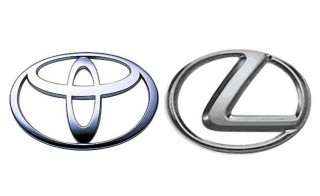Loading
Search
▼ Toyota targets collision-free cars
- Category:Other

ASIA NIKKEI
Toyota Motor is experimenting with driverless car technology at its research centers in the U.S. Its focus is on developing what it calls "self-judging" cars that can avoid traffic accidents. Other major auto and information technology companies, meanwhile, are rushing to develop self-driving cars.
Buoyed by record net profit in the April to September period, Toyota has raised its research and development costs by 8% from a year earlier to 980 billion yen ($8.34 billion) for fiscal 2014 through March. The automaker aims to create a next-generation automobile by improving safety technology, fuel economy and environmentally friendly features.
In Ann Arbor, close to Detroit, a strange-looking Toyota Lexus drove through an intersection in this lush university town. The Lexus was installed with a rotating radar box on the roof and devices on its front. The driver was not holding the steering wheel. Toyota has been conducting since 2013 self-driving car tests on public roads in this city.
The project is overseen by Toyota Research Institute of North America, or Trina. Two factors are required for self-driving car tests: a regulatory environment that allows for public road testing and a pool of software engineers. "The U.S. is the only country in the world that satisfies these two conditions," said a Toyota executive.
Lexus nexus
A model based on the Lexus' LS600h is used by Toyota for self-driving tests. The rooftop radar is capable of 360-degree detection of up to 70 meters, and measures the distances between the surrounding environment and the car. It uses GPS and gyro sensor functions to check the car's exact location against registered maps.
Four cameras on the front and sides of the car detect traffic signals and other vehicles nearby. It also has six milliwave radar devices on the front and one each on its sides, sending out electromagnetic waves to spot passers-by, nearby obstacles, approaching cars and other objects at intersections. To bring the test car closer to market, "We will cut the number of sensors considerably," said the Toyota official managing this project.
Toyota's biggest challenge is creating technology that can interpret the information from the car's sensors and relay that to the car's steering wheel and brake pedal. Through the public road tests, Toyota has been accumulating the data necessary for automatic responses to given situations. For Toyota, its ultimate aim is to create a self-driving car that can "make judgments on a par with humans," said the official.
Experiment details and data collection methods are secret. Yet, the company has already begun self-driving car tests below 80kph on public roads, where there are actual traffic signals and a constant stream of passers-by and oncoming vehicles. "This must be pioneering, even in the industry," said another Toyota executive.
Will Toyota roll out a self-driving car in the near future? Perhaps not. The company instead aims to create "collision-free" automobiles. As such, Trina is dedicated to developing the kind of technology that helps prevent traffic accidents. Trina's internal Collaborative Safety Research Center plays a central role in this undertaking.
Founded in January 2011, the research center counts 17 renowned U.S. universities among its research partners, including the University of Michigan, Massachusetts Institute of Technology and Stanford University. It involves more than 200 researchers; Toyota has decided to spend a total of $85 million on research projects there. The center studies a wide range of research themes, such as causes of reckless driving, accident-preventive technology and car accidents involving seniors and teens.
Director Chuck Gulash says what characterizes the center is its underlying Toyota philosophy. Drivers and cars, for those working at the center, are like teammates. All research projects there are conducted from the perspective of drivers.
To become an industry leader in the safe-driving technology sector, Toyota needs to capitalize on its global business-university collaboration network and achieve more innovative technologies.
- November 18, 2014
- Comment (0)
- Trackback(0)

